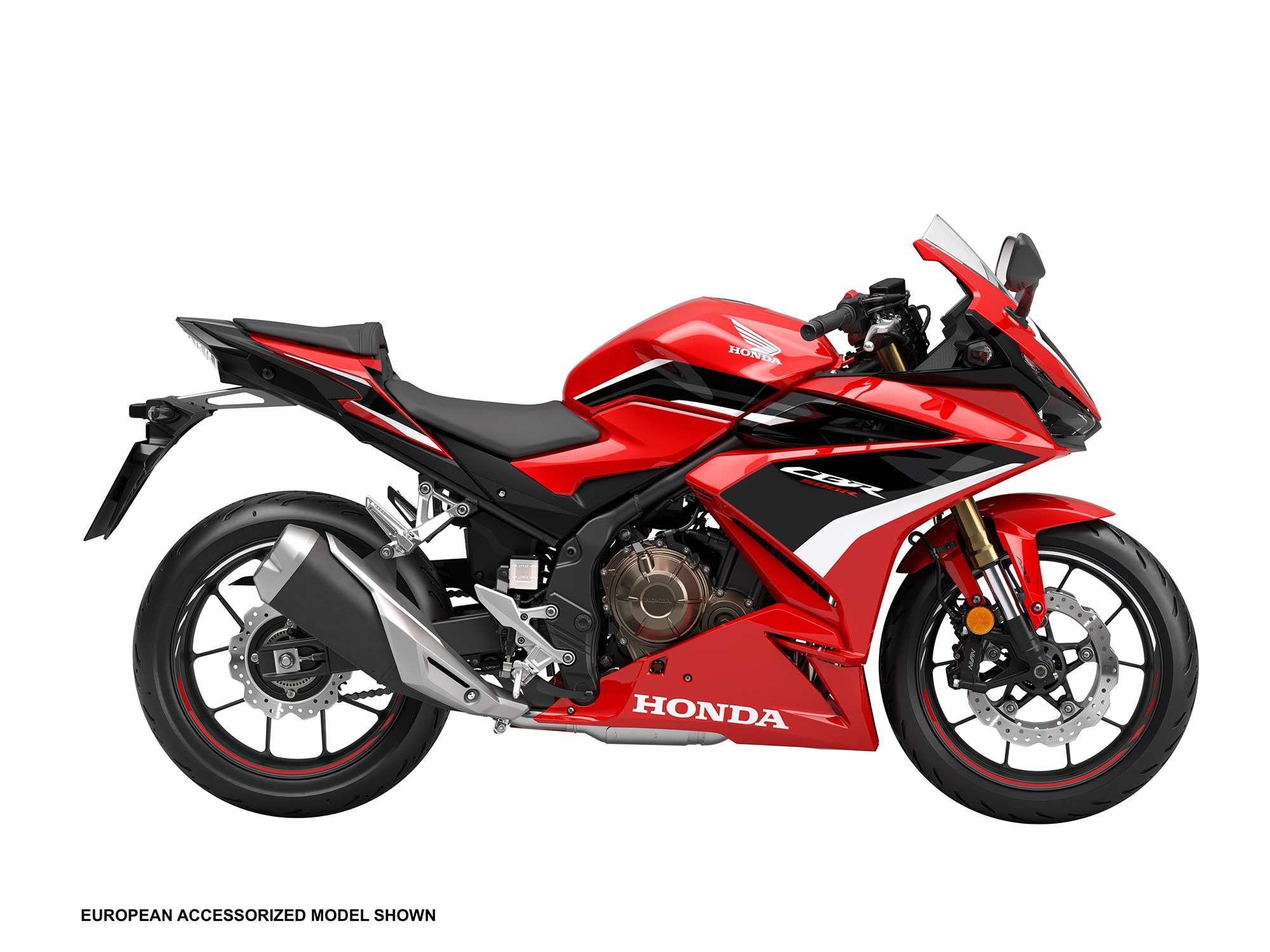
Ups
- New Showa BP-SFF inverted fork, revised shock settings
- New double-disc front brakes
- Sips fuel
Downs
- More expensive than the competition
- Very short first gear
- Mirrors not that functional
Verdict
Updates to the CBR500R ABS for 2022 made Honda’s midsize entry-level sportbike even more appealing, with better suspension and brakes atop the list of improvements. New riders looking for a friendly but capable bike to learn on would be wise to take a long look at the CBR.
The CBR500R’s twin-cylinder engine has plenty of easily accessible power, and the chassis is set up with agile steering that navigates urban traffic with ease. The CBR is a little pricier than the competition, but you’re also getting Honda’s excellent build quality and expansive dealer network.
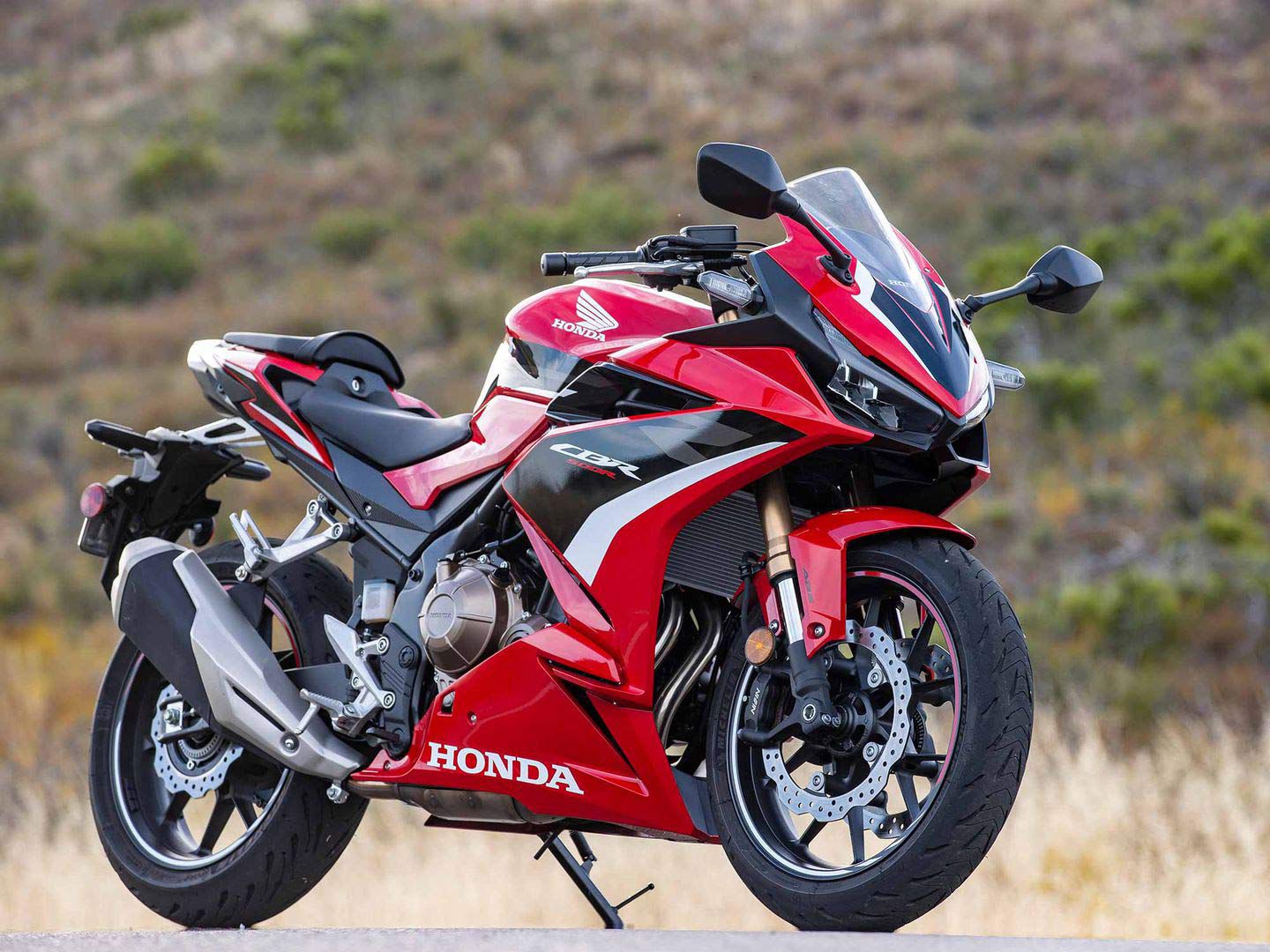
Overview
Originally introduced back in 2013, the CBR500R is part of Honda’s trio of entry-level models, the others being the naked CB500F and adventure-tour CB500X. All three are built upon an identical midsize twin-cylinder platform, allowing them to be sold in numerous world markets. With a 471cc parallel-twin engine encased in a steel diamond-type frame and square-tube swingarm as the starting point, these three models are a major step up in performance from your typical small-displacement beginner bike, but lose none of the user-friendliness that’s essential to bikes in this category.
With its racy fairing and clip-on bars, the CBR500R is the sportiest of the trio, but it’s definitely no supersport race-replica. The bars are a bit lower and narrower than the tubular handlebar on the CB500F, but the seat and its friendly 31.1-inch height, as well as its footpeg placement, are identical, so the rider is not pretzeled into a race jockey riding position.
The parallel-twin engine’s linear power and wide torque spread make this bike a good learning environment for beginners, with plenty of acceleration for getting through city traffic. A 55.5-inch wheelbase, coupled with a wet weight hovering around 425 pounds, means quick, agile handling for slicing through that traffic.
There have been a lot of minor updates throughout the years, with subtle detail improvements in 2016 and some major changes in 2019, as bodywork and styling got edgier and bars were positioned a little lower, along with a very slight midrange power increase and a drop of 7 pounds. But the CBR’s core combination of accessible performance and nonintimidating feel have remained. The ABS model eventually became the only model offered in 2021, but it’s the latest updates on the new 2022 model that have had the biggest effect on performance.
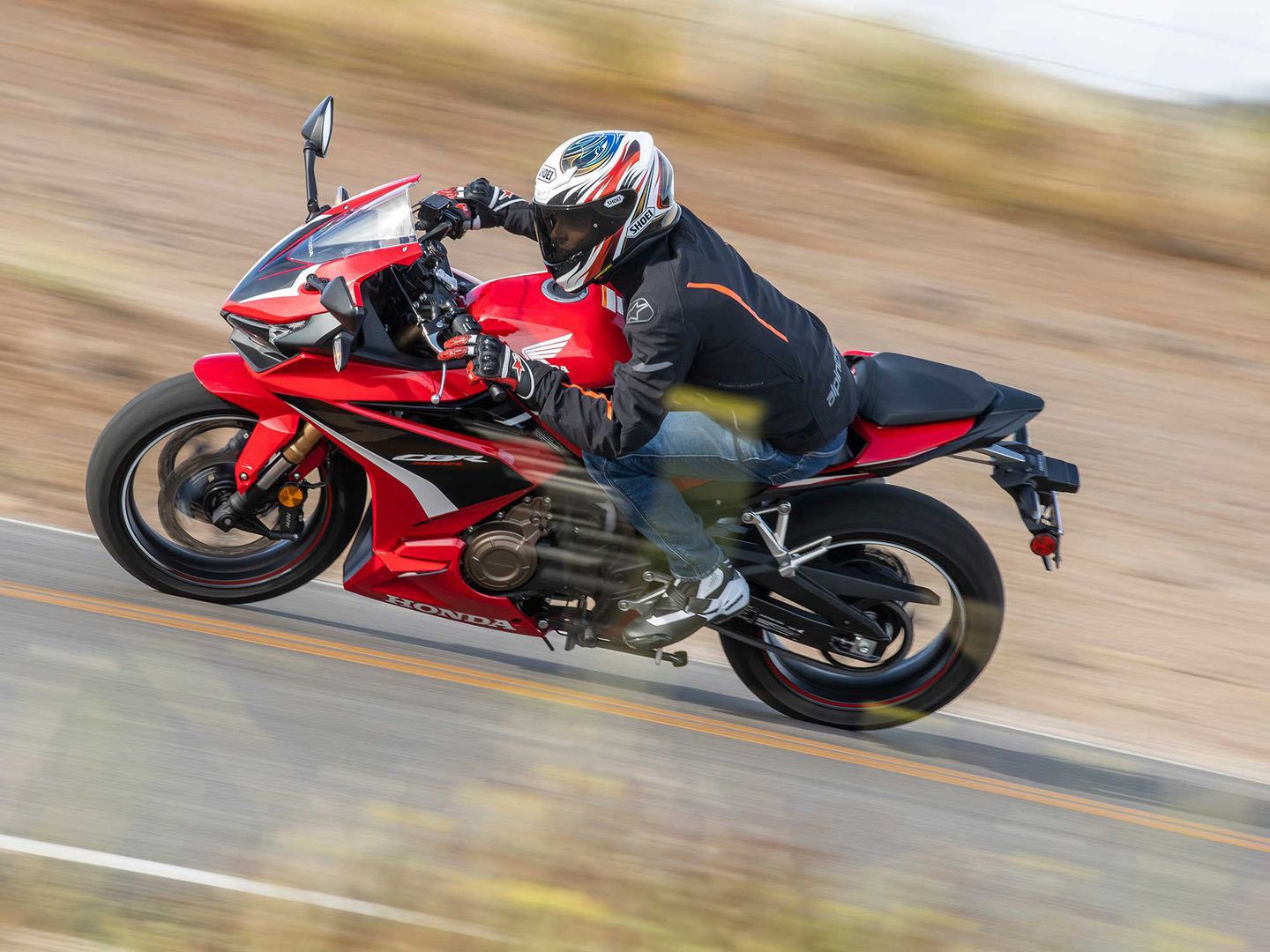
Updates for 2022
Suspension and brakes top the list of 2022 upgrades to the CBR500R, and while the old components weren’t bad, the new parts work so much better that there’s almost no comparison. Up front, a Showa SFF-BP (Single Function Fork – Big Piston) inverted fork replaces the old conventional damping rod unit, while a pair of 296mm discs and radial-mount four-piston calipers replace the single disc, two-piston caliper setup of the previous model. A new swingarm is more than 2 pounds lighter and more rigid; new 10-spoke cast aluminum wheels are lighter as well.
Pricing and Variants
The 2022 Honda CBR500R ABS retails for $7,199; the non-ABS variant was discontinued in 2021. Two color choices are available: Grand Prix Red and Sword Silver Metallic.
Competition
The CBR500R’s engine leaves it in a middle ground between lightweight entry-level machines and true middleweight twins. Full-fairing, lower-displacement options include the KTM RC 390, Kawasaki Ninja 400, and Yamaha YZF-R3. Meanwhile, its larger-displacement competition comes in the form of fully faired twins like the Kawasaki Ninja 650 and Aprilia RS 660.
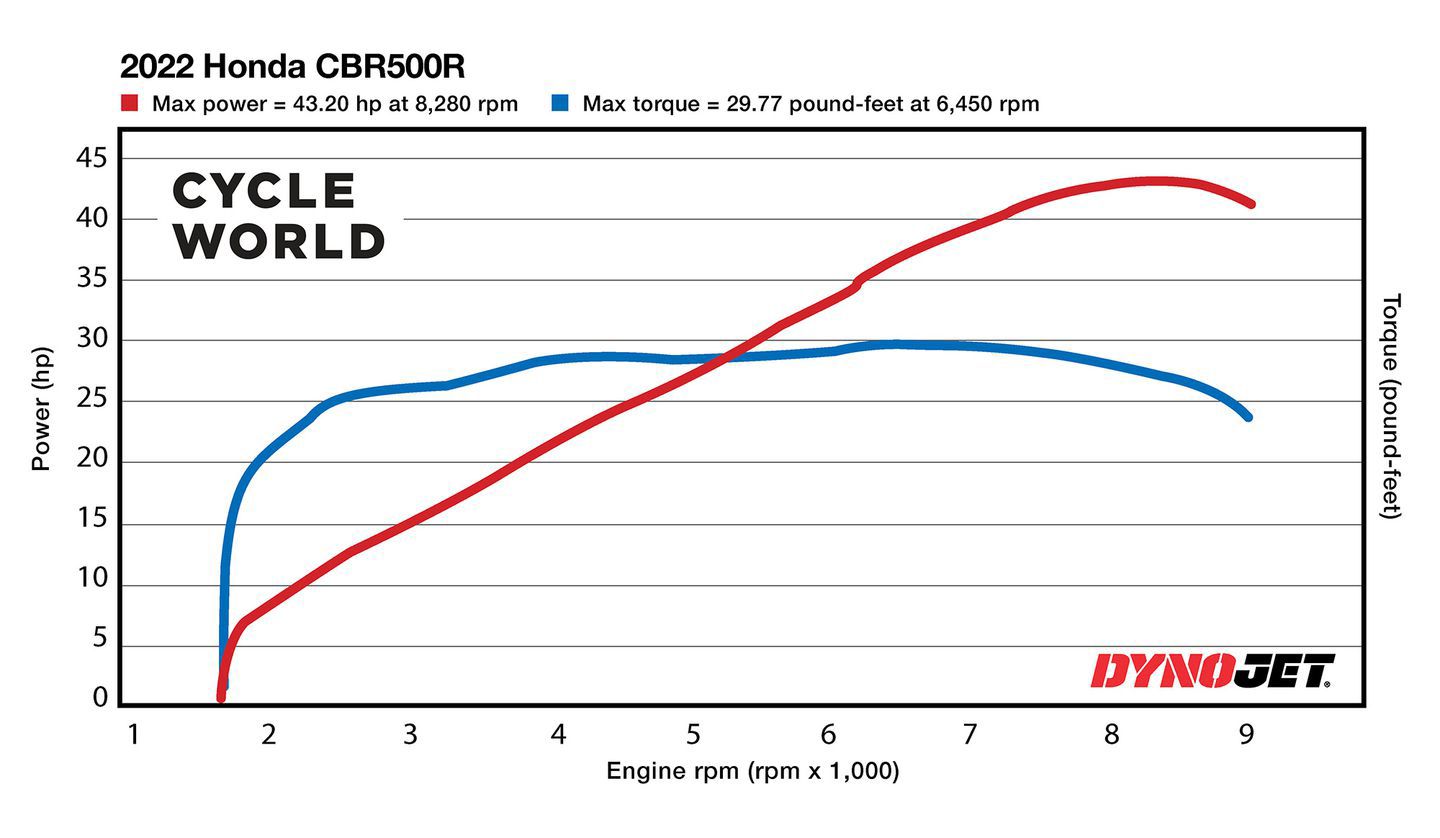
Powertrain: Engine, Transmission, and Performance
As a “global” model, intended for sale in numerous world markets, Honda’s 471cc parallel-twin-cylinder powerplant was designed to make just enough power to slide under the 47 hp limit, therefore qualifying for Europe’s and Southeast Asia’s mid-level A2 learner licenses. The nearly square bore/stroke figures of 67 x 66.8mm enable the engine to pump out decent torque (29.77 lb.-ft. at 6,450 rpm, with 43.2 hp at 8,280 rpm) while still being revvy enough to generate a very linear power curve: “There’s enough power and a nice, flat torque curve to scoot through city and highway traffic swiftly and easily without constantly rowing through the gearbox,” we said in our CBR500R/CB500F test review.
The six-speed transmission is equipped with a very short first gear, which helps avoid stalling for new riders but also requires a little throttle/shifter coordination to achieve smooth upshifts to second gear. A power-assist/slipper clutch was added in 2019, and allows easy lever effort with surprisingly good feel.
Those interested in overall engine performance can reference Cycle World’s dyno run here.
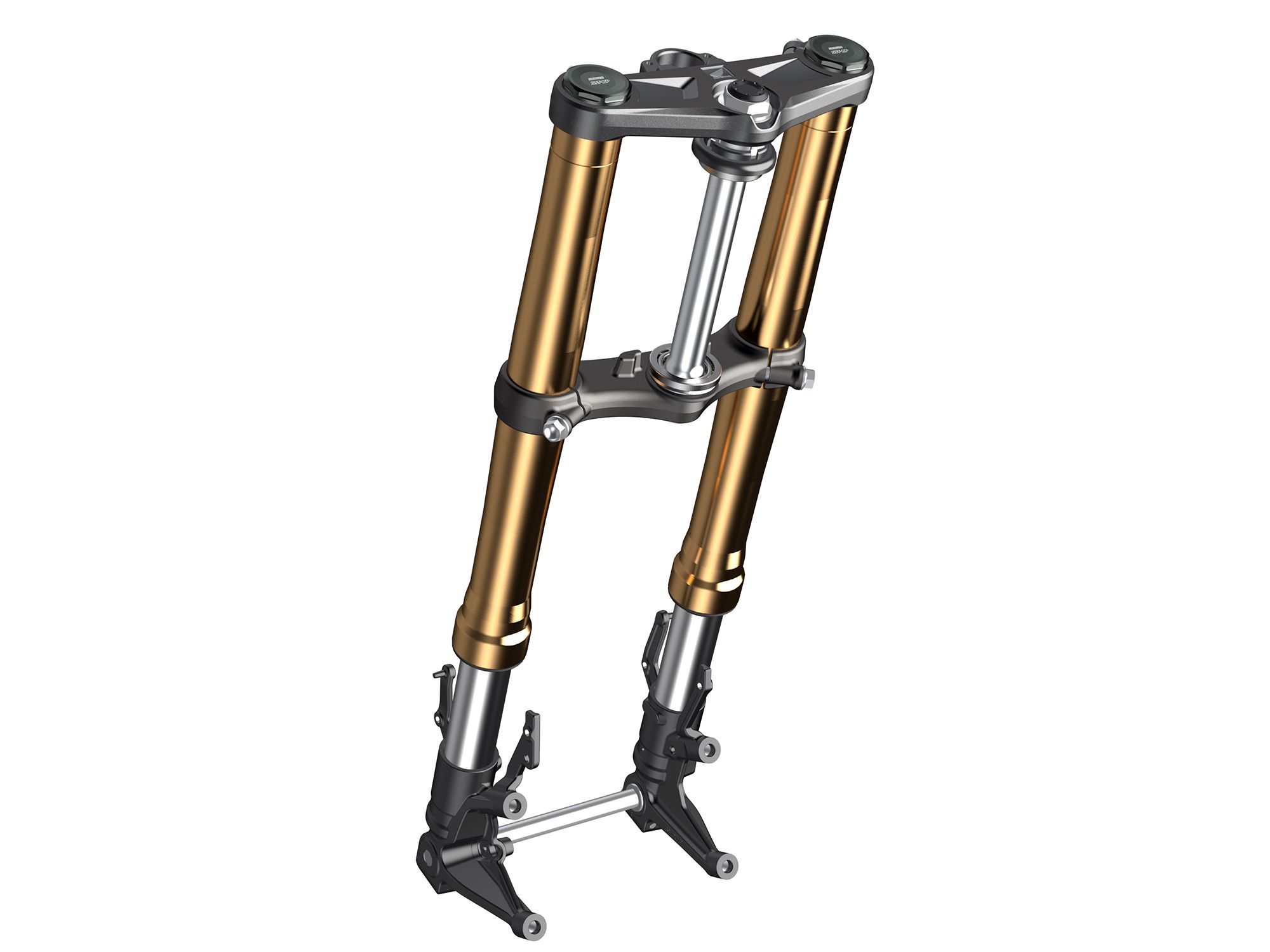
Handling
While the previous CBR certainly wasn’t terrible in the handling department, the budget-conscious build of the suspension could be felt anytime the pace ramped up or the front brake was applied with any authority. Midcorner bumps would upset the chassis; front-end dive while braking was excessive. The new Showa SFF-BP fork and reworked rear shock have eliminated those concerns, working with the excellent Michelin Road 5 tires to transform the CBR into an agile entry-level bike that can carve tight and twisty roads at a pace that would make many sportbikes sweat.
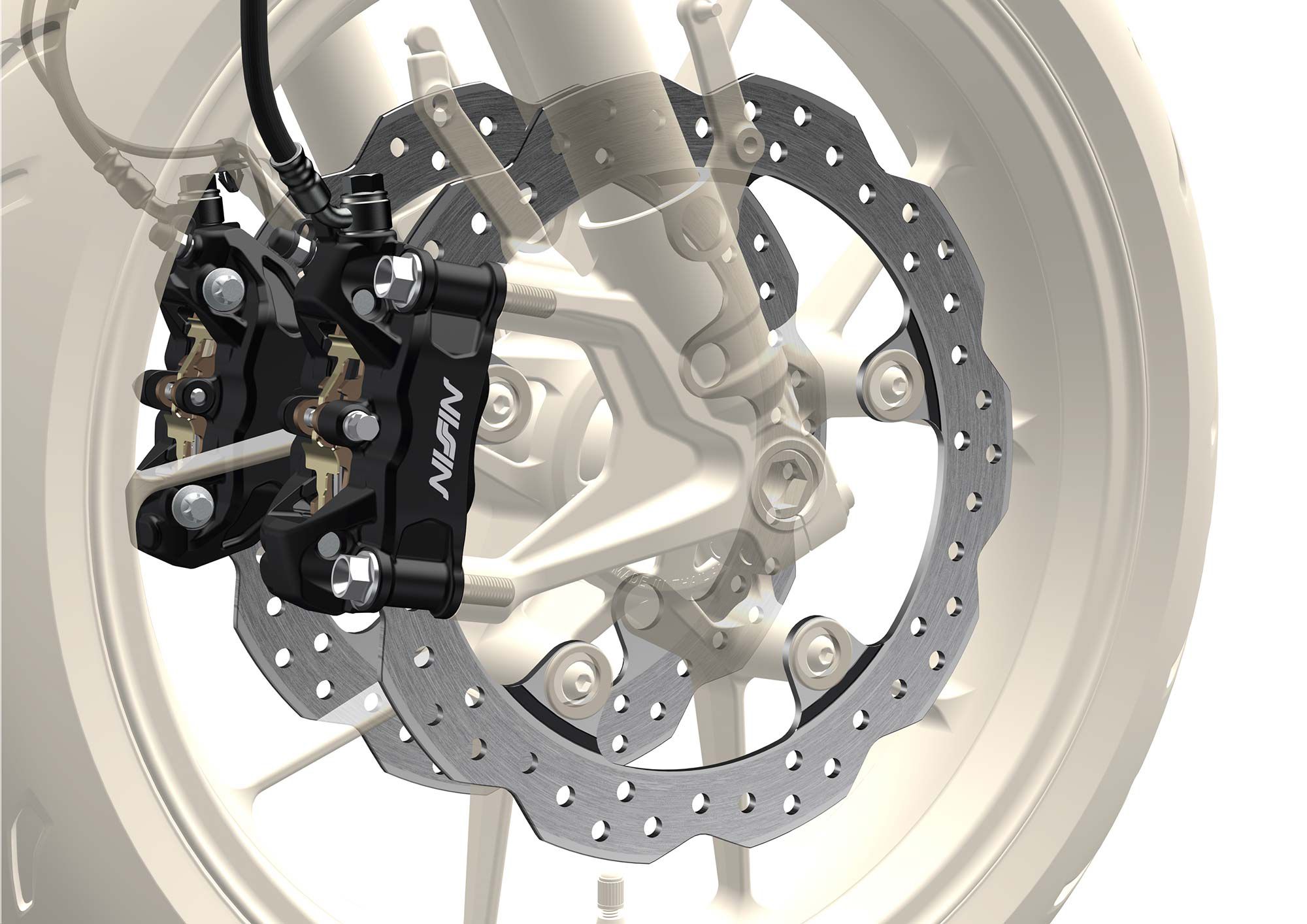
Brakes
Similar to the suspension upgrade, the new dual front disc brake setup (dual 296mm discs with radial-mount four-piston calipers) replaces a single 320mm disc and two-piston caliper combination that wasn’t terrible to begin with. But the new braking system allows you to brake harder and with more control while expending less effort; that pays dividends everywhere from city streets to twisty canyon roads.
Fuel Economy and Real-World MPG
The CBR’s engine really shines here. We averaged 67 mpg during our test review, and that was with a lot of throttle twisting while having fun in the canyons. We never saw the reserve fuel light come on before reaching 225 miles, and with the CBR’s 4.5-gallon tank, getting 280 miles out of a tankful isn’t being too optimistic.
Ergonomics: Comfort and Utility
Despite its edgy styling and its model designation, the CBR500R is by no means a supersport bike and lacks the racer-boy ergos of its larger CBR600RR and CBR1000RR-R linemates. Its newbie-friendly 31.1-inch seat height isn’t completely cramped for legroom, despite having good ground clearance for cornering fun, and while the clip-on bars were slightly lowered and narrowed in the 2019 makeover, they’re not as low as those on a real supersport.
The rider’s seat is comfortable enough for long rides; the passenger perch unfortunately isn’t as nice, with a small seat with minimal padding and high footpegs meaning complaints will be forthcoming in short order.
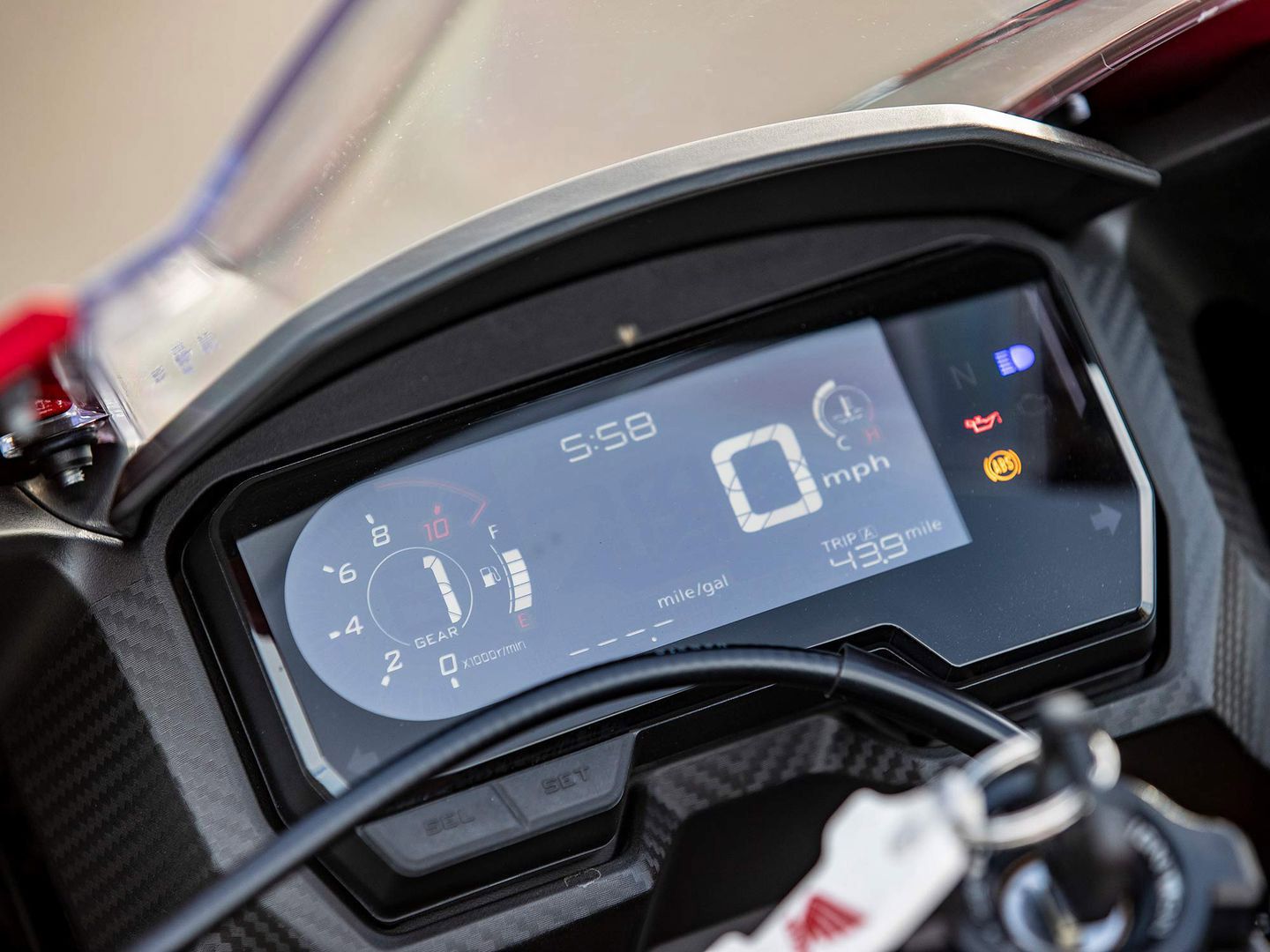
Electronics
Other than standard ABS, the CBR has no electronic rider aids. Its LCD dashboard looks dated in the age of full-color TFT displays, although the lighting is now all-LED, with the headlights getting a more powerful setup for 2022.
Warranty and Maintenance Coverage
The CBR500R comes with Honda’s one-year, unlimited-mileage transferable warranty. Extended coverage is available via the HondaCare Protection Plan.
Quality
The upgrades for 2022 have definitely raised the CBR’s game on the quality side, but remember that it’s a Honda, where build quality is always top of the list.
2022 Honda CBR500R ABS Claimed Specifications
| MSRP: | $7,199 |
|---|---|
| Engine: | 471cc, DOHC, liquid-cooled parallel twin; 8 valves |
| Bore x Stroke: | 67.0 x 66.8mm |
| Transmission/Final Drive: | 6-speed/chain |
| Cycle World Measured Horsepower: | 43.2 hp @ 8,300 rpm |
| Cycle World Measured Torque: | 29.8 lb.-ft. @ 6,500 rpm |
| Fuel Delivery: | Electronic fuel injection w/ 34mm throttle bodies |
| Clutch: | Wet, power assist/slipper; cable operation |
| Engine Management/Ignition: | TCI |
| Frame: | Diamond-type steel-tube |
| Front Suspension: | 41mm Showa SFF-BP inverted fork, nonadjustable; 4.3 in. travel |
| Rear Suspension: | Showa shock, spring preload adjustable; 4.7 in. travel |
| Front Brake: | Radial-mount 4-piston calipers, dual 296mm discs w/ ABS |
| Rear Brake: | 1-piston floating caliper, 240mm disc w/ ABS |
| Wheels, Front/Rear: | Cast aluminum; 17 3.50 in. / 17 x 4.50 in. |
| Tires, Front/Rear: | 120/70-71 / 160/60-17 |
| Rake/Trail: | 25.5°/4.0 in. |
| Wheelbase: | 55.5 in. |
| Ground Clearance: | 5.1 in. |
| Seat Height: | 31.1 in. |
| Fuel Capacity: | 4.5 gal. |
| Cycle World Measured Wet Weight: | 425 lb. |
| Contact: | powersports.honda.com |
Source: MotorCyclistOnline.com
